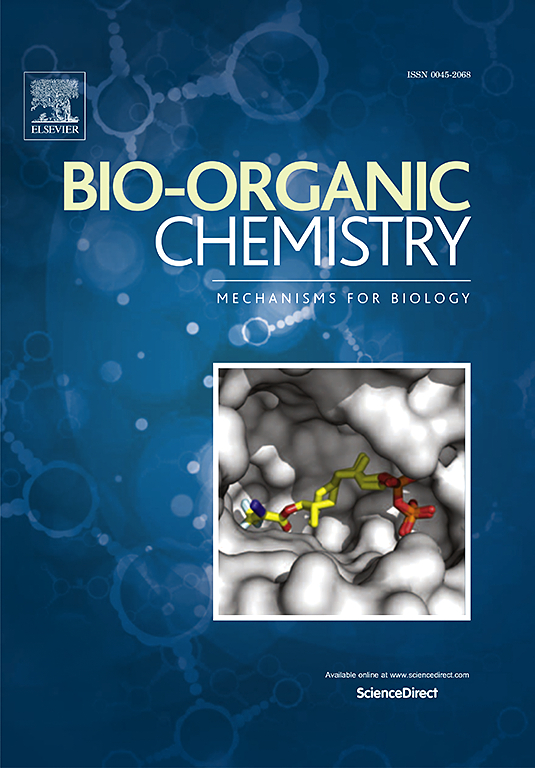Potential edaravone/benzocyclopentenone derivatives alleviate cerebral ischemia reperfusion injury as neuroprotective agents
IF 4.5
2区 医学
Q1 BIOCHEMISTRY & MOLECULAR BIOLOGY
引用次数: 0
Abstract
Based on the scaffold of edaravone, a clinically approved neuroprotective agent, a series of edaravone/benzocyclopentenone hybrid derivatives were designed, synthesized and evaluated for their biological activities in vitro and in vivo. Most of the compounds demonstrated promising neuroprotective effects, with derivatives containing benzofuranone or indanone as core moiety showing particularly strong activity. Among all derivatives, 17 compounds exhibited significantly improved neuronal cell viabilities compared to edaravone in an OGD/R model with rat primary neuronal cells, along with favorable safety profiles and blood-brain barrier permeability. Notably, compound 13, which includes a fluoro-substituted benzofuranone fragment, displayed the most potent neuroprotective effect in vitro and effectively reduced cerebral infarct area in vivo.

求助全文
约1分钟内获得全文
求助全文
来源期刊

Bioorganic Chemistry
生物-生化与分子生物学
CiteScore
9.70
自引率
3.90%
发文量
679
审稿时长
31 days
期刊介绍:
Bioorganic Chemistry publishes research that addresses biological questions at the molecular level, using organic chemistry and principles of physical organic chemistry. The scope of the journal covers a range of topics at the organic chemistry-biology interface, including: enzyme catalysis, biotransformation and enzyme inhibition; nucleic acids chemistry; medicinal chemistry; natural product chemistry, natural product synthesis and natural product biosynthesis; antimicrobial agents; lipid and peptide chemistry; biophysical chemistry; biological probes; bio-orthogonal chemistry and biomimetic chemistry.
For manuscripts dealing with synthetic bioactive compounds, the Journal requires that the molecular target of the compounds described must be known, and must be demonstrated experimentally in the manuscript. For studies involving natural products, if the molecular target is unknown, some data beyond simple cell-based toxicity studies to provide insight into the mechanism of action is required. Studies supported by molecular docking are welcome, but must be supported by experimental data. The Journal does not consider manuscripts that are purely theoretical or computational in nature.
The Journal publishes regular articles, short communications and reviews. Reviews are normally invited by Editors or Editorial Board members. Authors of unsolicited reviews should first contact an Editor or Editorial Board member to determine whether the proposed article is within the scope of the Journal.
 求助内容:
求助内容: 应助结果提醒方式:
应助结果提醒方式:


